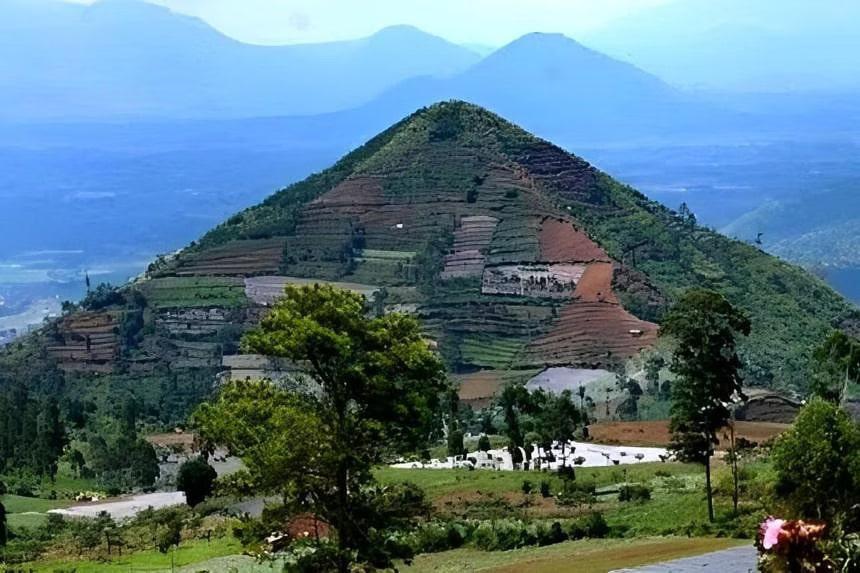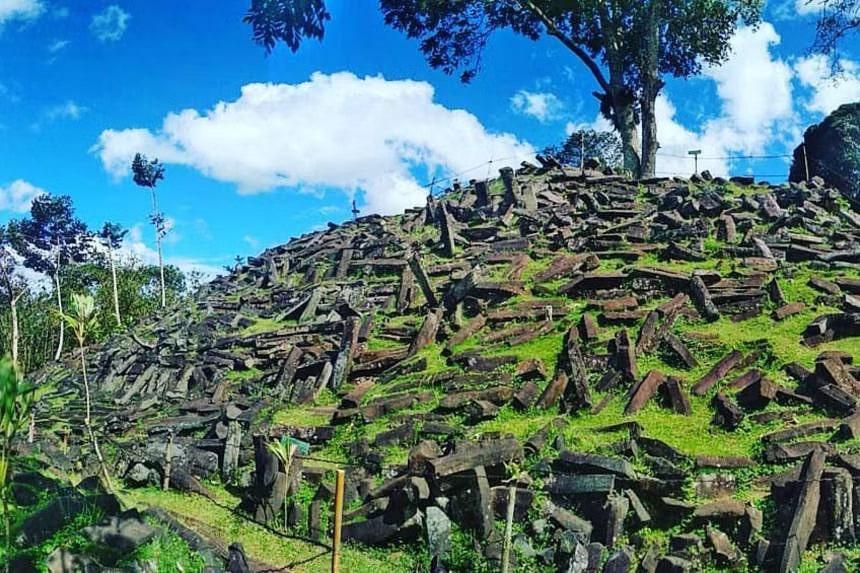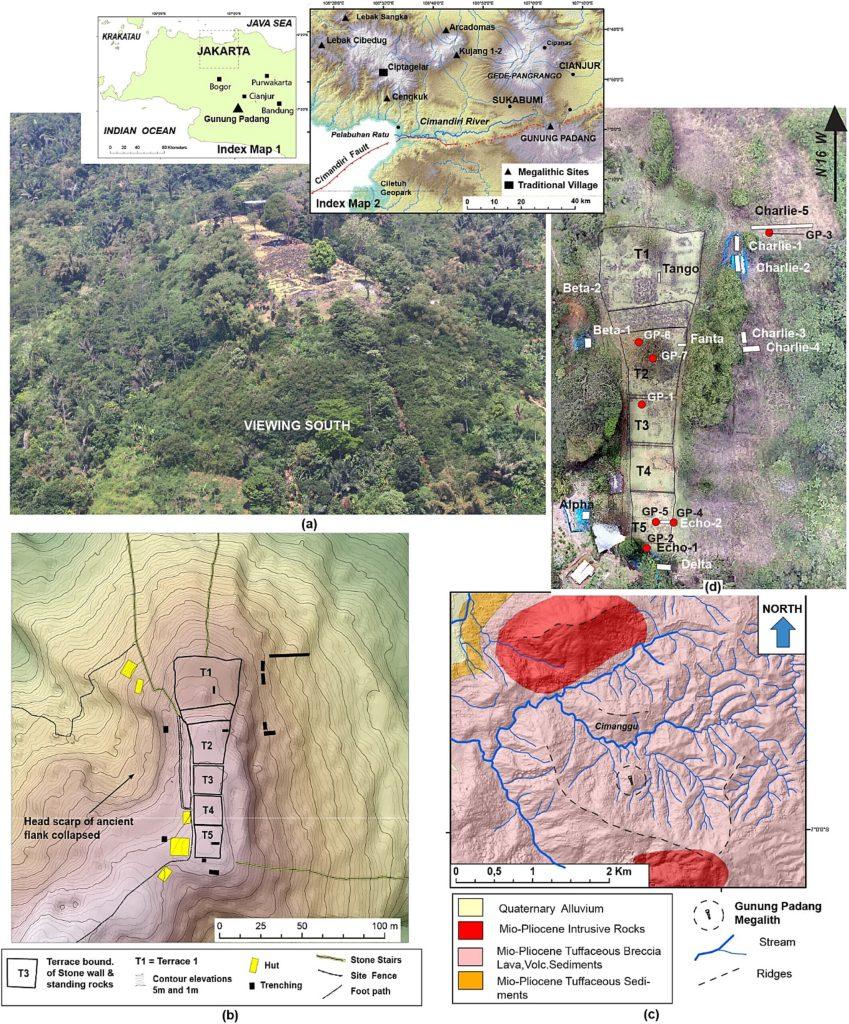Source - New evidence suggests Indonesia's Gunung Padang could be world’s oldest known pyramid - Arkeonews
 Gunung Padang, a colossal megalithic structure nestled in the lush landscapes of West Java, Indonesia, could be the world’s oldest pyramid. Recent research suggests that this ancient site may predate Egypt’s famous pyramids and is even older than the stone wonders of Türkiye’s Göbekli Tepe.
Gunung Padang, a colossal megalithic structure nestled in the lush landscapes of West Java, Indonesia, could be the world’s oldest pyramid. Recent research suggests that this ancient site may predate Egypt’s famous pyramids and is even older than the stone wonders of Türkiye’s Göbekli Tepe.
A team of archaeologists, geophysicists, geologists, and paleontologists affiliated with multiple institutions in Indonesia has found evidence showing that Gunung Padang is the oldest known pyramid in the world.
The group describes their multi-year study of the cultural heritage site in their article published in the interdisciplinary archeology journal Archaeological Prospection in October.
Gunung Padang, also known as the “mountain of enlightenment”, sits at the top of an extinct volcano and is considered a sacred site by locals. In 1998, Gunung Padang was declared a national cultural heritage site.
Led by geologist Danny Hilman Natawidjaja and his team at Indonesia’s National Research and Innovation Agency, the new research suggests that Gunung Padang dates back to the last Ice Age, around 25,000 to 14,000 years ago.
 Gunung Padang sits at the top of an extinct volcano and is considered a sacred site by locals. PHOTO: SCREENGRAB FROM JATILUHURONLINE
Gunung Padang sits at the top of an extinct volcano and is considered a sacred site by locals. PHOTO: SCREENGRAB FROM JATILUHURONLINE
The oldest construction of the pyramid likely “originated as a natural lava hill before being sculpted and then architecturally enveloped”, according to the team. This makes Gunung Padang at least 16,000 years old.
More specifically, the researchers discovered evidence of several efforts that, when combined over time, resulted in a completed structure. The first was sculpted lava, in which builders carved shapes into the top of a small, dead volcano. Another group added a layer of bricks and rock columns several thousand years later, sometime between 7900 and 6100 BCE. Another group later added a dirt layer to part of the hill, covering some of the earlier work. Then, between 2000 and 1100 BCE, another group added additional topsoil, stone terracing, and other elements.
The study challenges conventional beliefs by highlighting the advanced masonry capabilities exhibited by the builders of Gunung Padang. Contrary to expectations based on traditional hunter-gatherer cultures, the research reveals the existence of advanced construction practices during the last glacial period.
 (a) Aerial view of Gunung Padang taken from a helicopter. (b) Topography and site map generated from a detailed geodetic survey. (c) Geology map of the Gunung Padang region (Sudjatmiko, 1972). (d) Orthophoto map obtained from a drone survey conducted in 2014, indicating the locations of trenching sites (white rectangles) and core-drilling sites (red dots). T1, Terrace 1; T2, Terrace 2; T3, Terrace 3; T4, Terrace 4; T5, Terrace 5. Credit: Archaeological Prospection (2023). DOI: 10.1002/arp.1912
(a) Aerial view of Gunung Padang taken from a helicopter. (b) Topography and site map generated from a detailed geodetic survey. (c) Geology map of the Gunung Padang region (Sudjatmiko, 1972). (d) Orthophoto map obtained from a drone survey conducted in 2014, indicating the locations of trenching sites (white rectangles) and core-drilling sites (red dots). T1, Terrace 1; T2, Terrace 2; T3, Terrace 3; T4, Terrace 4; T5, Terrace 5. Credit: Archaeological Prospection (2023). DOI: 10.1002/arp.1912
The research team conducted a long-term, scientific study of the structure for this new study. They studied the structure using seismic tomography, electrical resistivity tomography, and ground-penetrating radar from 2011 to 2015. They also drilled down into the hill and collected core samples, which allowed them to use radiocarbon dating techniques to determine the ages of the hill’s layers.
The research team has also found some evidence suggesting there might be some hollow parts inside the structure, suggesting possible hidden chambers. They plan to drill down to them and then lower a camera to see what might be in these areas.
“Gunung Padang stands as a remarkable testament, potentially being the oldest pyramid in the world,” said the researchers in the paper.
Geo-archaeological prospecting of Gunung Padang buried prehistoric pyramid in West Java, Indonesia
Danny Hilman Natawidjaja, Andang Bachtiar, Bagus Endar B. Nurhandoko, Ali Akbar, Pon Purajatnika, Mudrik R. Daryono, Dadan D. Wardhana, Andri S. Subandriyo, Andi Krisyunianto
Archaeological Prospection | Archaeological Journal | Wiley Online Library